The power tool is very versatile and having them in the garages or workshops is an asset to have. Sometimes there may be a need to work with harder and denser materials. This is where heavy-duty tools like the hammer drill come to use. They have separate blades made of a more rigid material that can handle harder materials. So let us see in detail how to use a hammer drill.
Contents
Recommended Hammer Drill
How To Use A Hammer Drill – Step By Step Guide
So many people, after getting a good hammer drill, may have different confusion on how to use it. Here are a few steps on how to use a hammer drill. These steps will help in making some simple holes with the hammer drill.
Step 1: Measurements
Before making the hole, get the measurements right. Use a pencil or chalk to mark the place which gets drilled. Use a scale to get your dimensions or marking straight. This will help us drill without any mistakes. Get the necessary safety equipment ready, too; even though the hammer drill is safer than many other power tools, its good to be safe.
Step 2: Get The Drill Ready
So after marking the place to drill. Get the hammer drill out and make sure all the components are working without any problem. The most crucial part is your drill bits. If you’re a regular worker, then you might have many drill bits. Choose the right one for a specific job. Consider the depth and the material getting drilled. After choosing the right drill bit, fix it to the hammer drill.
Step 3: The Right Depth
At times, the user might not have the drill bit of the needed depth. So they have to end up using a more significant drill bit. So, in this case, use chalk or pencil to mark the point in the drill bit. This will help us stop drilling when we reach that point. Set the depth stop on the bit if the right depth bit is not available. The user can choose a different bit for wider holes too.
Step 4: Begin The Drill
Now start the hammer drill and, without any hurry, take it close to the mark in the material. Start the drill slow and make a guide hole for about 1/4 inches. The use of the guide hole is to hold the drill well and give the user stability while drilling. The user can uniformly increase the speed after making a guide hole.
Step 5: Sawdust
The problem of all saw while working is the sawdust. They are dangerous and can disturb the work too. So if the drilling hole is bottomless, stop at about 12 or 15 seconds, and pull the drill out. Remove the dust and proceed with the drill. This is an excellent method to follow as the dust can ruin your work.
Step 6: Finishing
Check with the drill bit depth stop if the hole has the correct depth. Clear off all the dust in the area. Spraying compressed air at full speed can clear all the dust for us. Then, proceed to the next hole in the same manner.
This will help us use the hammer drill for a simple hole in any material.
Things Needed To Use A Hammer Drill
So for a simple job with the hammer drill, here are few things which should be with us.
- The hammer drill (compare it with impact drill)
- Pencil or chalk for marking
- The proper drill bit and some extra bits for backup
- Goggles and gloves
- Some material to clean out the dust from the hole
The Hammer Drill
The hammer drill is a drill that can help the user work with more challenging materials. They have a hammer in the name for a reason as they follow a hammering mechanism. They hammer the drill bit through the material. They get used in jobs related to masonry due to their high power. They work on materials like concrete, marble, brick, and many other hard materials. Masonry is an area where the workers prefer hammer drills. There are two types of hammer drills.
- Standard hammer drill
- Powerful rotary hammers
They follow a similar type of operation but differ by the blade type and design. They have an adjustable torque control. They have a 3-jaw chuck for better handling of the tool. On the direction of the drill, recurring blows happen from the tool which delivers the job.
The hammer drill works in two ways. One way is the EP. EP stands for electro-pneumatic power. They get powered with a mixture of electricity and pressurized air. A cylinder and a piston get used to supporting this mechanism. The electric power rotates the crank to drive the piston. This runs the hammer drill for the job.
The other way is through percussion. This process goes on by the interaction of the series of gears. The two discs which ride over each other produce the hammering movement. This action of the gear rotates the drill bit at the same time. Hammering also happens when this rotation goes on. This makes the hammer drill work.
How To Get A Good Hammer Drill
Hammer drills are popular in the market, and this has lead to many brands producing their own. So having more than one option and not knowing which to choose will be a problem. So here are few tips to get a good hammer drill.
1. Brand
A famous brand is more reliable than a new brand or a local brand. See the comparison of the two popular drill brands. The quality also depends on the brand. A good brand can deliver a right quality product. A global brand gives better service and more warranty than some local brands. The parts of a famous brand will be easy to get in the market. Many other drill bits can also be compatible with global brands.
2. Speed
The speed of a drill will be accurate in doing your job. Each job may need a different speed. The speed of the drill gets measured in RPM. RPM stands for rotations per minute. While choosing the hammer drill, get a drill where we can select the speed. A single-speed drill will give the user only one speed to work with for all the needs. This may not be apt for different jobs. So having other options for the speed will give the user a better range and flexibility.
3. Power
The power of the hammer drill will be essential to finish jobs. Having a powerful motor will help the user work with different materials, even though a more powerful motor can increase the price. A powerful motor can handle more challenging materials like concrete without any problem. Spending the money will bear fruits when handling more challenging materials. You must also know how voltage affects the drill.
4. Usability
The hammer drill should be convenient for the user to handle. If the drill is very heavy and complex to use, the user can’t take it for a long time. This can lead to fatigue when the tool gets used for a longer time.
Our Top Hammer Drills
There are many hammer drills in the market. Here are our top picks.
1. Dewalt DCH273B
- Cordless hammer drill has 2.1 Joules of impact energy for fast drilling in concrete.
- SHOCKS ACTIVE VIBRATION CONTROL System of DEWALT 20V hammer drill reduces vibration felt by the user at the handles,...
- Lightweight design makes this DEWALT 20V brushless hammer drill ideal for rod hanging, seismic & safety attachments,...
- They are a rotary 20 V rotary hammer drill.
- They come with a brushless motor, which gives more durability to the tool.
- They have a factory set clutch that reduces high torque reactions. This might happen if the drill bit gets jammed.
- Dewalt is famous for its high-quality design. This hammer drill also has an ergonomic design that lasts long.
- They deliver about 2.1 joules of impact energy.
- They run with the lithium-ion battery and has a voltage of 20 V.
- Active vibration control prevents vibration of the tool.
- They have a perform and protect feature, which gives more safety to the user.
- They are more in the affordable range and come with a 3-year warranty. The user must get the extra batteries and charger.
2. Bosch R228VC
- Cordless hammer drill has 2.1 Joules of impact energy for fast drilling in concrete.
- SHOCKS ACTIVE VIBRATION CONTROL System of DEWALT 20V hammer drill reduces vibration felt by the user at the handles,...
- Lightweight design makes this DEWALT 20V brushless hammer drill ideal for rod hanging, seismic & safety attachments,...
- They have a drilling capacity of 1- 1/8 inch.
- They come with an auxiliary handle, depth gauge, and carrying case.
- They can get switched to three different methods. They are hammer only mode, rotary hammer mode, and rotation mode. This makes the tool versatile.
- They are very lightweight and weigh around 7 pounds.
- The SDS- Plus drive system makes the tool very handy to use.
- The motor can deliver up to 8 Amps without any problem.
- There is even control to increase operator control, which can help the user work for a longer time.
- They can deliver up to 2.4 Joules of impact energy.
- The Vario-Lock positioning allows the user to rotate and lock a chisel. They can work in 40 different positions.
- The metal gear cover and long cord give the user more comfort while working.
- They have a 1-year limited warranty and are a bit expensive. But Bosch gives products with very high quality. This is a reason for the increase in price.
3. Makita HR2475
- Powerful 7.0 AMP motor delivers 2 ft.lbs./2.7 j. of impact energy to handle the most demanding applications
- 3-mode operation for "Rotation Only", "Hammering with Rotation" or "Hammering Only" for multiple applications
- One-touch sliding chuck for quick bit changes
- They have a torque limiting clutch, which prevents the damage of gear.
- They get powered by 7 Amp motor, which can deliver a speed of 1100 RPM.
- They can deliver 2.7 Joules of impact energy.
- They can also operate in three different modes. They are hammer only mode, hammering with rotation mode, and rotation mode.
- They have a powerful motor with more copper commutator bars. The motor also has some field core interlocking steel lamination.
- The D-handle has a rubber body that gives the user more comfort and grip while working.
- The one-touch sliding chuck helps the user change the bits without any trouble. The protective bumper also gives added durability to the tool.
- They have a 40 chisel angle setting, which allows the user to position the tool based on the need.
- They are cheaper than many other similar models in the market. They come with a 1-year limited warranty too.
FAQs
1. What are the differences between a standard drill and a hammer drill?
The usual drill and hammer drill differ in the way the tool works too. But the main difference is the job they work on. The hammer drill is better for jobs related to harder and denser material. That is materials like concrete, marble, and granite. The standard drill will be capable of working with wood or metal without any problem. But the tool can break while it works with harder material. This is where the hammer drill can help the user.
2. Are the drills the same as the impact driver?
Many of us have this confusion, and we don’t understand the difference between them. They look even very similar. The main job of an impact driver is to drive screws. It does it with proper power and speed, which will be tough with the normal drill. They can drive any screws with the least effort from the user. The drills have the primary motive of drilling. They drill the screws or drill holes and, at times, help with the bolts. They give a constant torque and are precise for some delicate jobs.
3. Can we drill into concrete without a hammer drill?
Having a hammer drill while working with concrete may make the work easy. But with a good drill bit, even a regular drill can do the job. But it won’t be as easy as using the hammer drill. The design of a hammer drill allows the user to work on more rigid material with ease. This is not the same in a regular drill. So even with an excellent drill bit, the user has to put a lot of effort into finishing the job. The motor of the drill is also essential for this.
Conclusion
A hammer drill is an excellent tool if the user needs to work with harder and denser material. They can do the work with little effort from the user. They follow different mechanisms to hammer the drill bits into different materials. This includes concrete, graphite, and much other rigid material. The steps given above will help the user do some basic jobs with the hammer drill. Please use the necessary safety equipment before working with the drill. We hope your hammer drill is ready to make some noise and do some work.



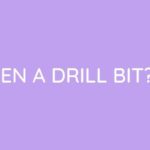
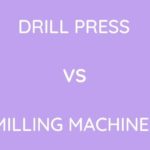
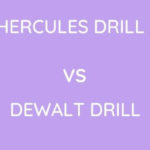

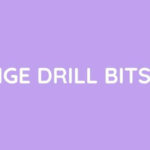

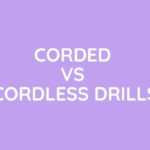

Leave a Reply